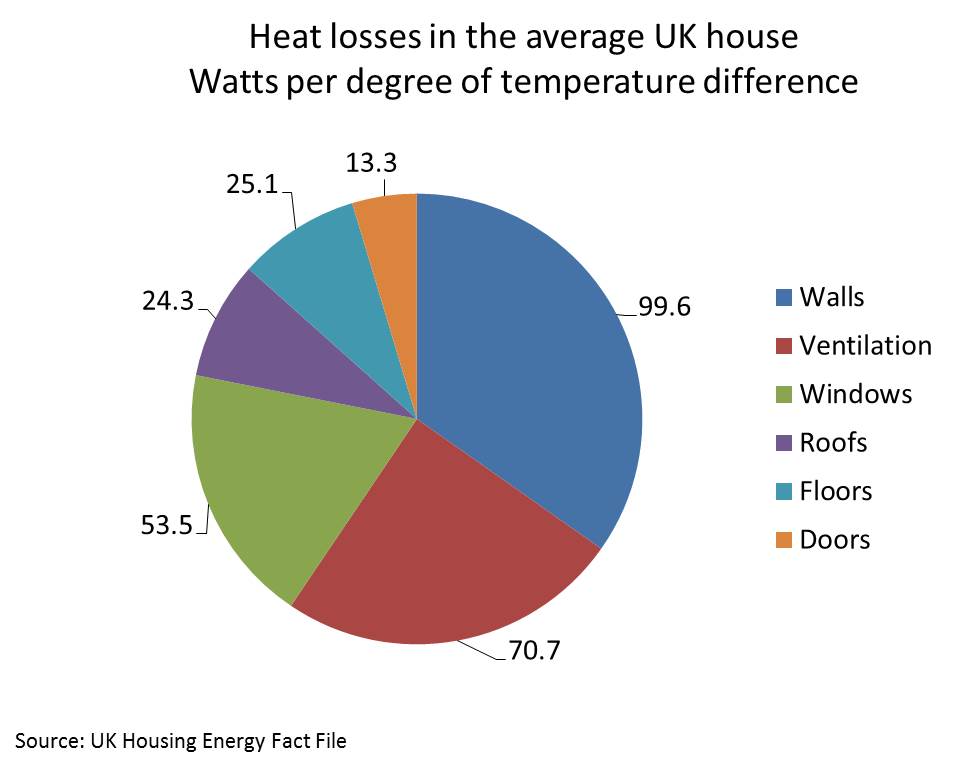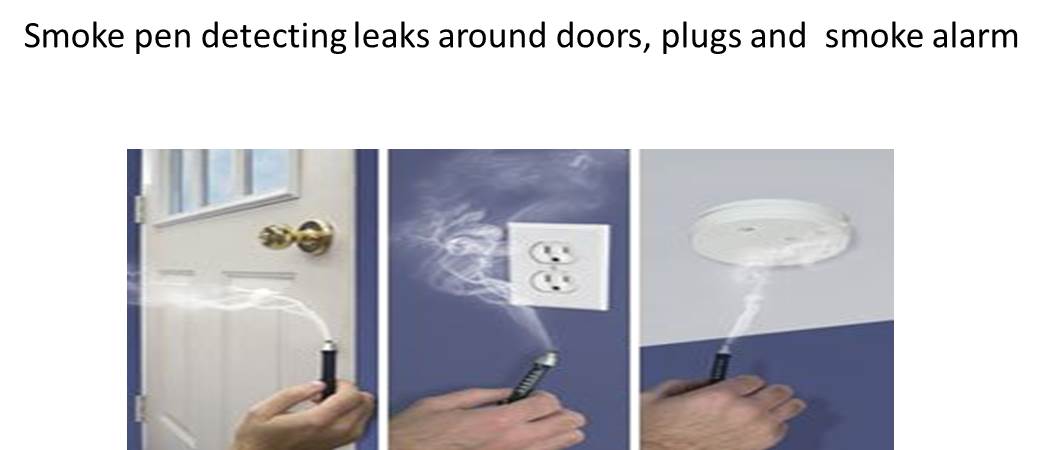Reducing draughts: a national competition to show how much can be saved
The latest government data shows that draughts cause about 25% of all heat loss from the average house. That means that a quarter of the household gas bill is disappearing through such places as cracks in doors, holes around water pipes and the gaps around window frames. Reducing losses through ventilation is fiddly. It requires perseverance and care. Nevertheless, the savings can be large at a minimal cost. As the Green Deal unravels, we need a new national programme to improve house insulation standards: draught-proofing is the obvious target. The return on investment is likely to exceed all other energy saving initiatives.
Here is my proposal. I suggest a national competition, run by an institution such as the Building Research Establishment (BRE), challenging home insulation companies to reduce draughts in a number of pre-selected homes. It’s possible to accurately measure the draughts in a house before and after insulation and the winner would be the company that cut heat loss the most. It would be finicky, laborious work but it would demonstrate the value of careful draught-proofing. Perhaps each competitor would be given two working days per house and might be asked to work on five houses to prove their skills. Most amateur draught-proofing work isn’t particularly effective but shown the way we could all improve our appalling leaky homes.
In the government’s compendious and fascinating ‘Housing Energy Fact File’ has a table that estimates the actual heat losses from the components of a typical home. For every degree that the home is maintained above the external temperature, the house loses 287 watts of heat. So keeping the home at an average of 18 degrees when it’s -2 outside requires heating that provides about 5,740 watts, or 5.74 kilowatts.
The walls are most important drain of heat. About 32% of all heat leaves this way. What are called ‘ventilation’ losses are next at about 25%. This is 50% more than the windows and three times as much as the roof.
These figures are for the average house. For a home with good cavity insulation, the loss from draughts might actually exceed the loss through the external walls. To put a monetary value on this, let’s assume that the average house uses about 12,000 kWh of heating per year. 3,000 kWh of this needed to replace the heat lost through draughts, and this will cost around £120 at current prices. Saving a good fraction of this by better draught-proofing is cheaper, quicker, less disruptive and more fun than wall insulation or getting into the loft to roll out some another bale of fluffy mineral wool. It may be actually more effective as well: a previous article on this web site showed that major measures such as cavity wall insulation saved much less energy than predicted.
And, perhaps as importantly, reducing draughts around the house will improve perceived internal temperature. Draughts moving across the skin suck heat out of the body faster than still air does so a still house will seem to be a warmer house.
Current UK building regulations require a new house to lose less than 10 cubic metres of air per square metre of external surface area an hour at a standard pressure difference (50 pascals, if you want to know, which is an order of magnitude more than the normal gradient) between the inside and the outside. This will usually mean hundreds of cubic metres of expensively warmed air are being lost every hour. Put another way, all added together the average new house is said to have gaps the total size of a basketball. (I don’t have the data to back this comment up, by the way).
Everybody knows about the leaks that arise because the door doesn’t fit properly, or the windows that have a gap around the edge. It’s easy to deal with this with some cheap insulating tape bought from a DIY store. Applied carefully, this will make some difference. The real gaps are probably less visible. They occur where water or waste pipes go through walls, where light fittings meet the ceiling or skirting boards touch the floor. Filling these gaps is not difficult and nor does it require expensive materials. But it is time-consuming and requires punctilious care. The photograph below is from a Strome presentation on sources of heat losses in new UK houses. Finding and filling gaps like this is difficult work if it is to be done well.
This is presumably why home improvement programmes such as the Green Deal focus on expensive but standard suggestions such as changing the boiler or putting up solar panels.
None of us really know how to improve all aspects of draught proofing. Which of us has looked carefully behind the loo to see if there are gaps in the cement, or gone under the kitchen sink to see if hole through which the cold water comes into the house is sealed? These are where the biggest savings are likely to be.
I think we should have a competition to see who can improve houses by the largest amount. The competition can be documented and filmed. The winner would be the company or person that cut draughts the most (measured in the reduction in air leakage per hour). The competitors could use equipment such as infra-red thermometers or smoke pens. (A pen that issues smoke so that the observer can see where the draughts are).
We cannot predict what the savings are likely to be. Cavity wall insulation saves an average of 1,400 kWh a year, reducing bills by £56 or so. Really good draught-proofing might do better. But the cost might be a third or less. And the impact on perceived warmth might be greater.
Too many government energy efficiency initiatives are not backed by hard information about their true effectiveness. Air source heat pumps are a prime example. I believe a big national competition to crown the best draught-proofer, run by the Building Research Establishment over a long weekend, would attract attention, help build understanding and provide some real numbers about the benefits of careful plugging of leaks from domestic homes. As the Green Deal dies a death and takes the UK insulation industry with it, a new campaign to reduce heat losses might provide some much needed alternative employment.


